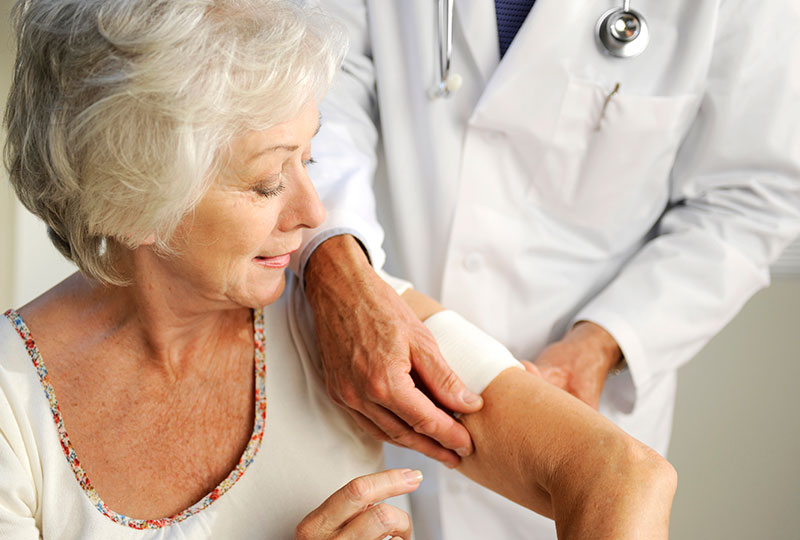Learn the facts about this painful condition that usually hits seniors.
Nearly one in three in the United States will get shingles in their lifetime, many of them older. If you’re a caregiver, you may encounter this painful condition that affects about 1 million Americans annually.
Two groups are especially at risk for the virus, according to James S. Powers, M.D., AGSF, an associate professor of medicine in the Vanderbilt Center for Quality Aging.
First are those older than 50, simply because “their immune systems are waning,” Powers says. People with weakened immune systems — like those who are sick or taking immunosuppressant medications — also have a heightened risk for contracting shingles.
Additionally: “For unknown reasons, acute illnesses can trigger shingles,” Powers says. A patient can come into the hospital with a stroke or for surgery, and then contract shingles.
“Look for blistering legions along a nerve track, like a stripe on one side of the body or face,” Powers says. The blisters are usually accompanied by intense feelings of pain and burning. Those with shingles should make an appointment with their healthcare provider to receive a prescription antiviral medication, such as acyclovir, and pain medication.
Are you a caregiver? Here’s what you need to know.
-
Don’t contract it yourself.
“Shingles is a highly contagious viral illness,” Powers says, noting it’s most contagious when blisters are present — about a two-week period. Pregnant women, children and those with immune deficiency are at highest risk of contracting shingles and should avoid contact.
-
Stay out of the public.
Because it’s highly contagious, someone with shingles should stay to themselves as much as possible. “If you’re caring for someone with shingles and the blisters are present, try to cover them gently to avoid contaminating other surfaces,” Powers says. The key is to be gentle, which is no small task.
-
Be sympathetic to the pain.
Shingles generally lasts for about two weeks, but the pain can stick around a lot longer, due to a condition called postherpetic neuralgia. Powers suggests putting wet compresses on the areas to reduce itching and pain.
-
Get the vaccine.
“Even if someone has had an attack of shingles, they should get the vaccine,” Powers advises. He recommends the shingles vaccine for anyone 50 and older, and said it is “covered with no coinsurance for everyone over age 60.” However, it’s a live vaccination, so pregnant women, people with a weakened immune system or those with an illness, such as a cold, should not receive it.

